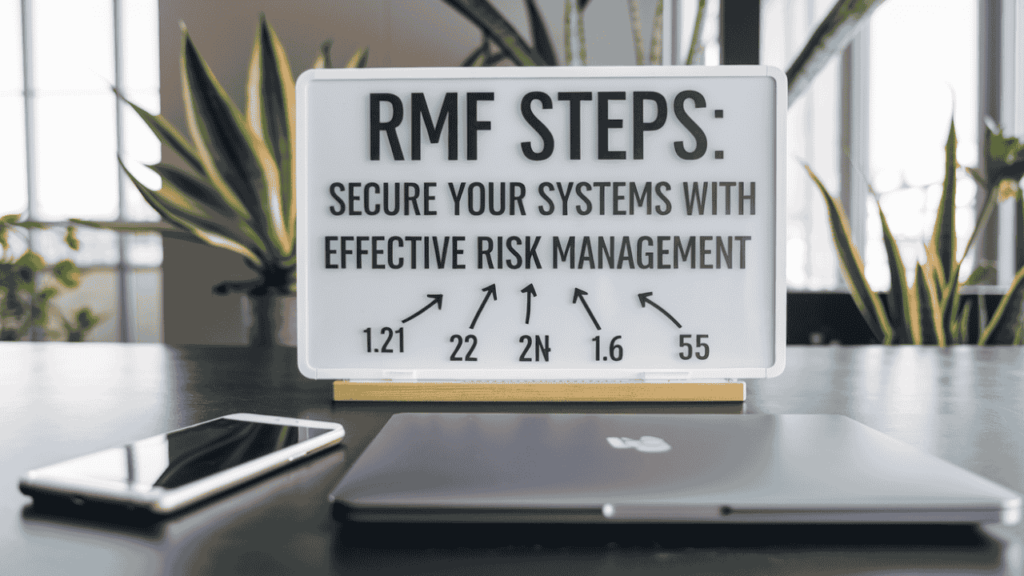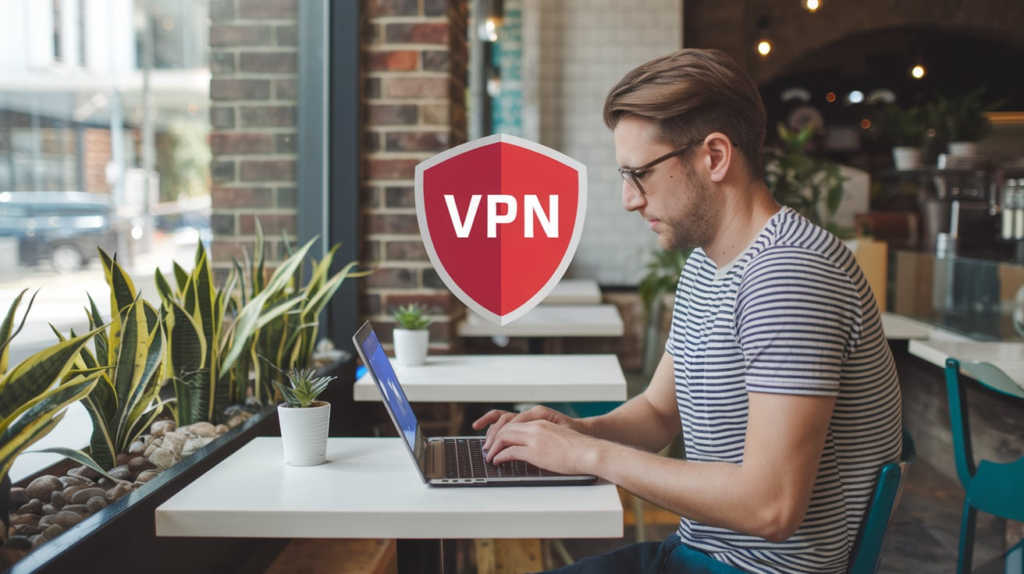The Risk Management Framework (RMF) is a structured approach to identifying, assessing, and managing risks in information systems. It is essential for protecting sensitive data and ensuring system integrity. By following RMF, organizations can implement effective security measures to prevent potential threats and vulnerabilities. The RMF process helps you understand the risks involved, choose the right security controls, and continuously monitor and update them to maintain protection over time. Following RMF steps ensures that security is proactive rather than reactive, reducing the chances of breaches and ensuring compliance with standards. It is a critical strategy for anyone looking to safeguard their information systems against evolving threats and challenges in today’s digital world.
10 RMF Steps to Secure Your Systems
Step 1: Categorize Information Systems
The first step in the RMF process is categorizing information systems based on the type of data they handle. Systems may process highly sensitive data, like personal or financial information, or they may only handle publicly available data. By identifying the nature of the data, you can determine the appropriate level of security each system requires. This ensures that systems with more critical data get the protection they need, while systems with less sensitive data receive a more basic level of security.
Categorizing information systems is essential for applying the right security controls. Sensitive systems, such as those dealing with confidential or classified data, require stronger security measures like encryption, access controls, and regular monitoring. Less critical systems, on the other hand, may not need as many safeguards, which allows you to allocate resources more efficiently. This classification also helps with compliance by ensuring that each system meets the necessary regulatory standards for data protection.
Step 2: Select Security Controls
In this step, you select the appropriate security controls for your information systems based on their classification. Security controls can be technical, like firewalls and encryption, management-based, such as security policies and procedures, or operational, like regular system monitoring and training. The security controls you choose depend on how sensitive the data in the system is. For example, systems with confidential data may need more advanced technical controls, while less sensitive systems might only require basic protection measures.
Selecting the right security controls is important because it ensures each system has the specific protection it needs to minimize risks. Tailored security measures help prevent vulnerabilities and attacks that could compromise the system’s data. Without proper controls, systems can be exposed to threats that could lead to data breaches, loss of confidentiality, or other serious security issues. By applying the right controls based on the system’s classification, you can significantly reduce the risk of attacks and maintain a secure environment for your information systems.
Step 3: Implement Security Controls
In this step, you apply the security controls that were selected in the previous step to protect the system. This involves setting up technical protections, like firewalls, encryption, and access controls, as well as implementing management and operational measures, such as security training and creating security policies. By applying these controls, you ensure the system is properly safeguarded against potential threats and vulnerabilities.
Proper implementation of security controls is crucial because it directly affects the system’s security. If security measures like encryption and firewalls are not properly set up, they may not work as intended, leaving the system vulnerable to attacks. For example, without proper encryption, sensitive data can be exposed during transmission. By correctly implementing security controls, you ensure the effectiveness of these protections, helping to reduce risks and keep the system secure. This step is essential for creating a strong defense against security threats.
Step 4: Assess Security Controls
In this step, you evaluate how well the security controls you’ve implemented are working. This is done by using testing and monitoring tools to check if the controls, such as firewalls, encryption, and access restrictions, are effectively protecting the system. The evaluation process includes looking for any weaknesses in the system and ensuring that all security measures are functioning as intended.
Assessing security controls is important because it helps you confirm that the protection mechanisms are doing their job. If any control isn’t working properly, it could leave the system open to attacks or breaches. Regular assessments also help identify areas that need improvement or updates, ensuring your system remains secure as new threats arise. This step helps maintain the strength of your security by catching potential issues before they become major problems.
Step 5: Authorize the System for Operation
Once the security controls are in place and have been assessed, the next step is to formally authorize the system to be used. This means that the system is reviewed to ensure it meets all the necessary security requirements and can be safely operated. The authorization process involves checking that the system is fully protected and complies with security standards before it goes live.
Authorizing the system is important because it ensures accountability. By confirming that all security measures are in place, it provides confidence that the system is ready for use and won’t expose sensitive data to risks. Without proper authorization, systems may go live with gaps in security, making them vulnerable to attacks. This step is crucial for ensuring that systems are secure and meet required safety standards before they are used in a real-world environment.
Step 6: Monitor Security Controls
In this step, you continuously monitor the security controls to detect any unusual activity or potential security breaches. This involves keeping an eye on the system’s performance and checking for any signs of threats, such as unauthorized access or malware. Monitoring tools and techniques are used to track the system’s security status in real time.
Monitoring security controls is important because it helps detect threats as they happen. Early detection of security issues allows for a faster response, minimizing potential damage. Without constant monitoring, threats may go unnoticed, putting the system at risk. By monitoring security measures regularly, you ensure that your system stays secure and continues to perform well, protecting sensitive data from evolving threats.
Step 7: Maintain Security Controls
In this step, it’s essential to regularly update and adjust security controls to adapt to new and emerging threats. As technology and security risks evolve, old security measures may become less effective or even obsolete. To ensure the system remains secure, regular updates, patches, and adjustments are needed. This can include software updates, adding new security features, or tweaking settings to improve protection. It’s also important to review the system periodically and make any necessary adjustments to stay ahead of cybercriminals.
Maintaining security controls is vital for preserving system integrity and minimizing risks. Without regular updates, security controls can become outdated, leaving the system vulnerable to new types of attacks. Additionally, as security regulations change, maintaining controls helps ensure that your system stays compliant with the latest industry standards. By keeping security controls up to date, you ensure the system’s continued protection, safeguard sensitive data, and prevent any potential breaches. Regular maintenance helps the system stay resilient and secure, ensuring long-term safety and performance.
Step 8: Risk Assessment and Re-Evaluation
In this step, you periodically reassess the risks to your system in order to stay ahead of emerging threats. Over time, new vulnerabilities may arise, and your current security measures may no longer be enough to protect the system. By regularly evaluating the risks, you can identify potential weaknesses and make adjustments to your security strategy before an attack happens.
Risk assessment and re-evaluation are important because they help you adapt your security measures to new challenges. Cyber threats are constantly evolving, and a strategy that worked in the past may not be effective against new types of attacks. By reassessing risks, you ensure that the system remains protected and can respond quickly to any new vulnerabilities. This step helps maintain a strong defense and ensures ongoing system protection against the latest threats.
Step 9: Conduct Security Audits
In this step, you perform security audits to evaluate how well the system’s security measures are working. Audits involve a detailed review of the system to check for weaknesses or vulnerabilities that could be exploited by attackers. This helps in assessing the overall effectiveness of your security setup.
Conducting regular security audits is important because it helps identify any gaps in your security controls. Even if the system appears secure, there may still be unnoticed vulnerabilities. Audits ensure that all security measures are up to date and functioning properly, reducing the risk of a security breach. By performing audits, you can maintain a strong defense against evolving threats and ensure your system remains protected.
Step 10: Report and Document Risk Management Activities
In this step, you keep detailed records of all actions taken in managing risks within the system. This includes documenting the steps followed in the risk management process, from identifying risks to implementing controls and performing audits.
Reporting and documenting these activities is important for several reasons. It helps ensure compliance with regulations, provides transparency in how risks are handled, and makes it easier to review and improve security measures in the future. Keeping clear records also supports future audits, allowing for better tracking of risk management efforts and making it simpler to identify any areas that may need attention.
Conclusion
Following the RMF steps is essential for securing systems and protecting sensitive information. Each step helps identify, manage, and reduce risks, ensuring your system is well-protected from potential threats.
By applying a systematic approach to risk management, organizations can strengthen their security measures and stay prepared for evolving cyber risks. This ongoing process not only helps maintain a secure system but also ensures long-term protection, compliance, and operational continuity.


